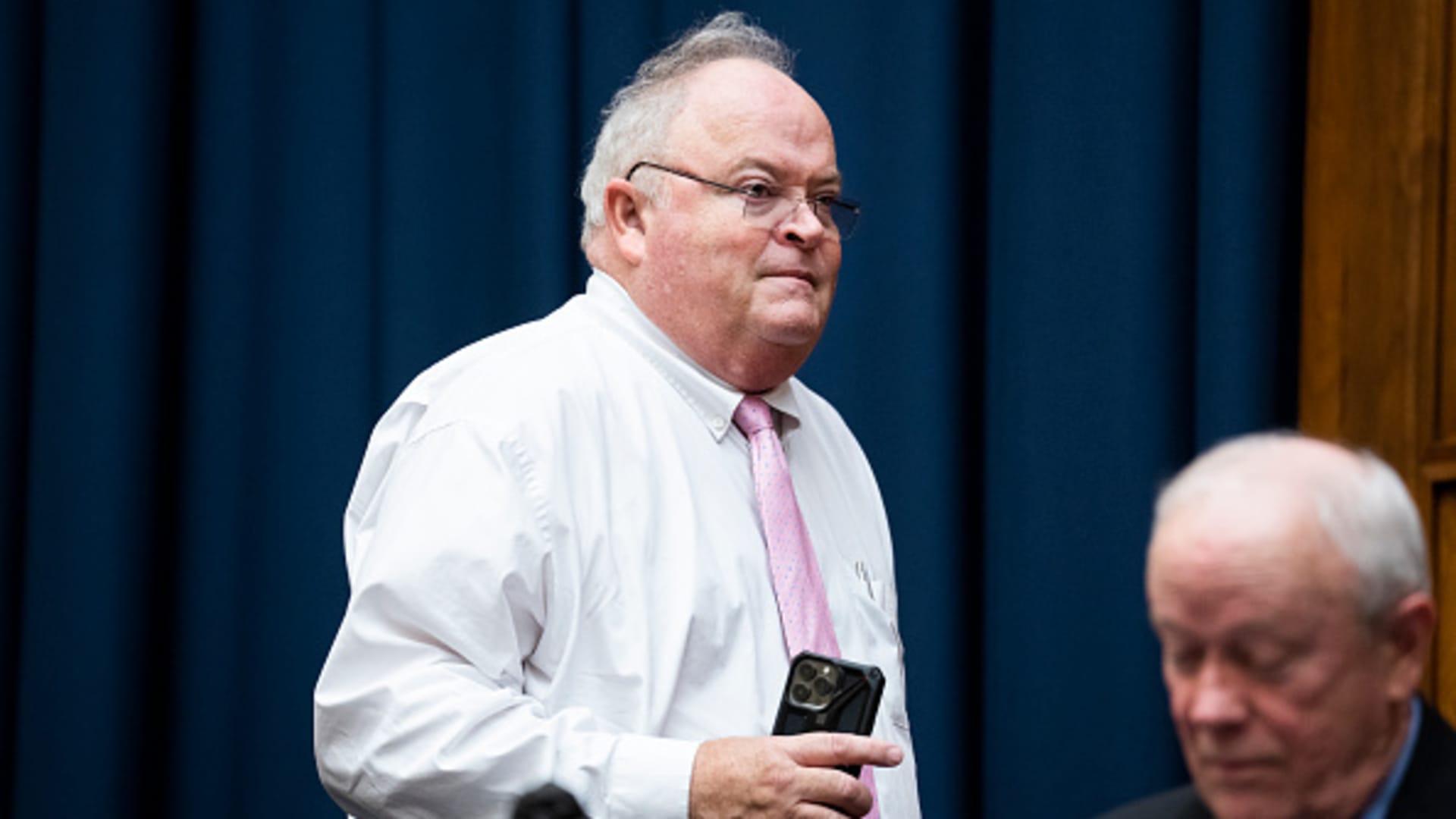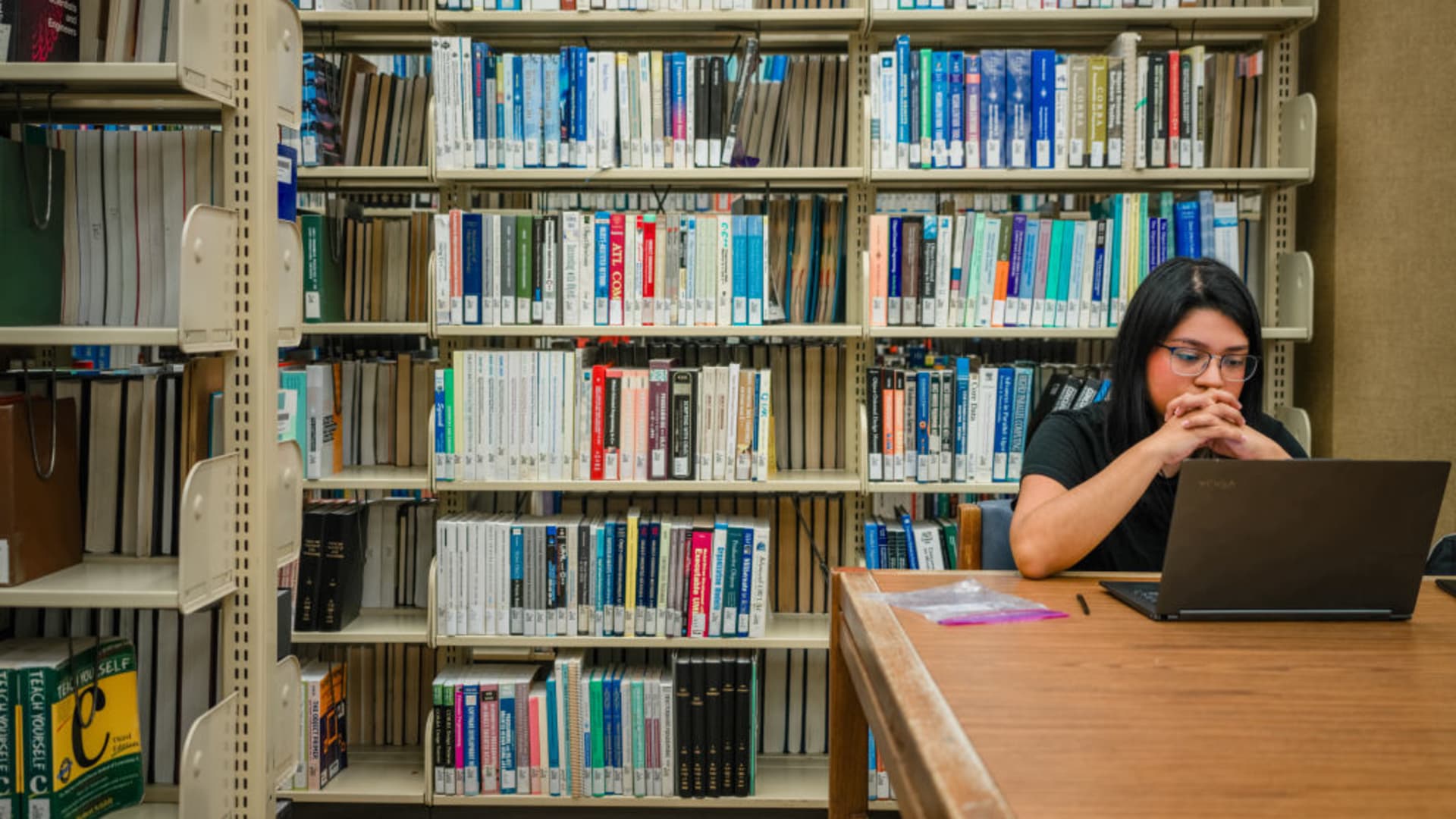Field of wheat in central Kansas is nearly ready for harvest.
Ricardo Reitmeyer | Getty Images
With a population of about 2,100, Neodesha, Kansas, is roughly 100 miles from Wichita and Topeka in Kansas and Tulsa, Oklahoma. Its claim to fame is the 65-foot-tall tower that supported the drilling framework for the first commercial oil well west of the Mississippi River, locals say.
But as an old oil town, Neodesha has struggled with a decreasing population and an aging housing supply for years.
When the refinery formerly owned by Standard Oil Co. closed in 1971, “the population was cut in half over night,” according to Neodesha’s mayor, Devin Johnson.
“We have seen that decline as every small community has over the last 50 years,” Johnson said. “The thing with small communities is, if you are not growing, you are dying.”
Last year, Neodesha partnered with MakeMyMove, an online relocation marketplace that connects workers with communities trying to attract new residents.
Incentives include tax waivers and free college
The town is now offering qualifying new residents incentives — such as waiving state income tax through 2026 along with property tax rebates and help with day care for working parents — as well as access to existing perks, including student loan repayment assistance up to $15,000 and free college tuition through the Neodesha Promise scholarship program.
MakeMyMove, which has worked with 88 communities across the U.S., screens applicants and connects them with local resources.
Since the program launched in 2024, more than 30 people are in the process of moving to Neodesha, according to Evan Hock, MakeMyMove’s co-founder and chief operating officer.
“We’ve awarded over $1 million in scholarships, and I feel like we are helping the community and making some real progress,” said Ben Cutler, who grew up in Neodesha and now funds the scholarship program, which started in 2020 and is available to any graduate of Neodesha High School in good standing. (Neodesha’s promise program will cover tuition at participating colleges or associate degree programs and vocational schools nationwide.)
“One of my key focuses was helping build the community, to help in any way I could to make Neodesha a more attractive community for young families, and I think we’re making some real progress in that regard — I certainly hope so anyway,” Cutler said.
More from Personal Finance:
2025 is a renter’s market, experts say
Home price growth has slowed
1 in 3 Americans have ‘layoff anxiety’
Meanwhile, efforts are also underway to construct hundreds of new homes, apartments and duplexes in the region, along with the development of retail and commercial spaces and the renovation of several historic buildings on Main Street.
“We’ve got to cherish what we’ve got but make sure we make Neodesha an attractive place for people to come,” Johnson said.
These cities will pay you to move there
Other communities across the country have also been upping the ante with cash incentives or voucher programs for people willing to move.
For example, workers relocating to Topeka can receive up to $10,000 for rent for the first year or up to $15,000 to put toward buying a home.
Another program affiliated with the West Virginia Department of Tourism is offering a cash incentive of $12,000 along with access to free coworking spaces and outdoor recreation packages for those who move to the state for at least two years.
The Shoals Economic Development Authority offers $10,000 in cash to full-time remote employees who are willing to relocate to the Shoals community in northwest Alabama.
“This is a cost-effective way of doing economic development,” said MakeMyMove’s Hock. The communities “usually get a return within the first year.”
However, “incentives are not the reason people actually move,” he said. Affordability is key, he said, but community also plays an important role.
“They are looking for quality of place, they want a community connection, that’s what is motivating the move,” Hock said.
‘A family-friendly place to live’
Incentive programs in Neodesha and other regions are gaining steam as residents from major cities across the country increasingly migrate to Southern and Midwestern spots where housing costs are less severe, and where construction is keeping up with the demand, reports show.
United Van Lines’ annual 2024 study found a growing shift away from the cities and suburbs of New York, Los Angeles and Chicago toward more “livable” locations with lower day-to-day living expenses.
Kaitlyn and Jack Sundberg with their dogs Max and Bella in front of the home they purchased in Neodesha, Kansas.
Courtesy: Kaitlyn Sundberg
Kaitlyn Sundberg never expected that she would move to Kansas. Sundberg and her husband, Jack, lived in Southern California but struggled to save enough for the down payment on a home of their own.
“We were living with my in-laws, and we were not able to afford anything,” said Sundberg, 27.
Sundberg’s husband, who worked as an estimator for a telecom company, expanded his job search — significantly — and found an opportunity as the program manager for Southeast Kansas Inc.
When they visited Neodesha, “it just seemed like a family-friendly place to live,” Sundberg said.
“We spent a Saturday looking for a house — there were kids riding bikes,” she said, “I just cried.”
The couple moved to Neodesha with their two dogs 18 months ago, even before the incentive program launched. Sundberg now works as the executive director of the new early learning center in town after a neighbor brought over the job posting and suggested she apply for the position.
“Being away from family is the hardest part,” she said, “but I would never want to move back.”
Subscribe to CNBC on YouTube.


 Economics1 week ago
Economics1 week ago
 Economics1 week ago
Economics1 week ago
 Personal Finance1 week ago
Personal Finance1 week ago
 Economics6 days ago
Economics6 days ago
 Personal Finance1 week ago
Personal Finance1 week ago
 Economics1 week ago
Economics1 week ago
 Economics5 days ago
Economics5 days ago
 Personal Finance1 week ago
Personal Finance1 week ago










